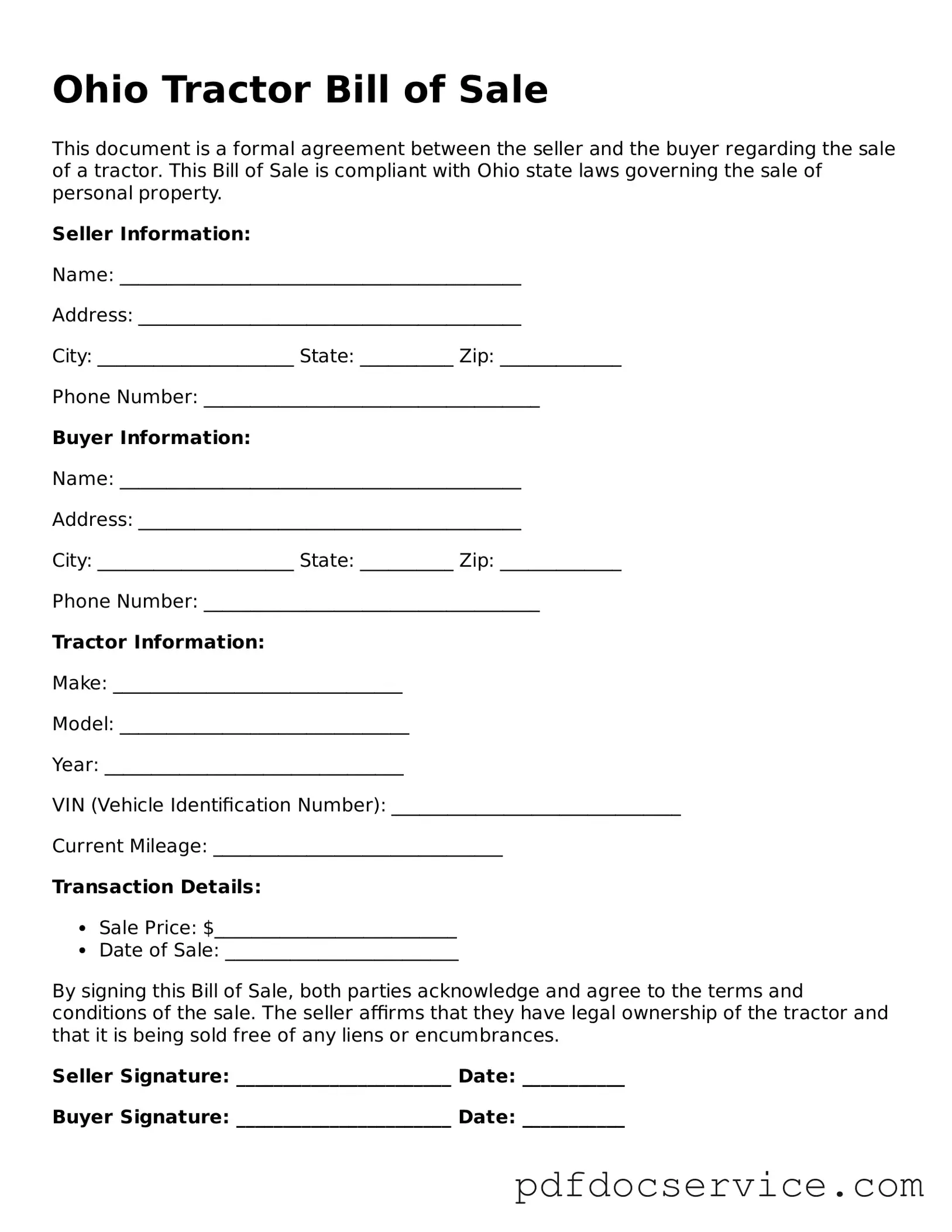The Ohio Tractor Bill of Sale form serves as a vital document in the transfer of ownership for tractors within the state. This form is essential for both buyers and sellers, as it provides a clear record of the transaction and helps protect the rights of both parties involved. Key elements of the form include the names and addresses of both the buyer and the seller, a detailed description of the tractor being sold, including its make, model, year, and Vehicle Identification Number (VIN). Additionally, the form captures the sale price and the date of the transaction, ensuring transparency in the exchange. It may also include information regarding any warranties or representations made by the seller about the tractor’s condition. By completing this form, individuals can avoid potential disputes in the future, as it serves as legal evidence of the sale. Furthermore, having a properly executed Bill of Sale is often necessary for registering the tractor with the Ohio Bureau of Motor Vehicles, thus facilitating a smooth transition of ownership. Overall, the Ohio Tractor Bill of Sale form is not merely a piece of paper; it is a critical tool that helps ensure that the sale process is clear, fair, and legally binding.
